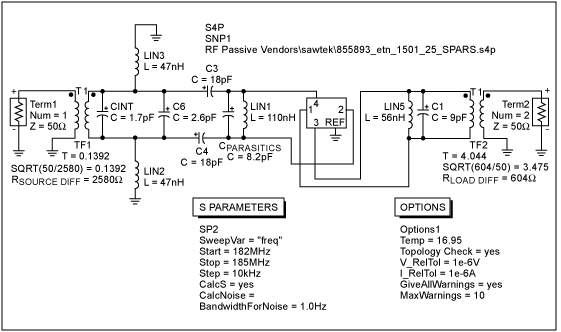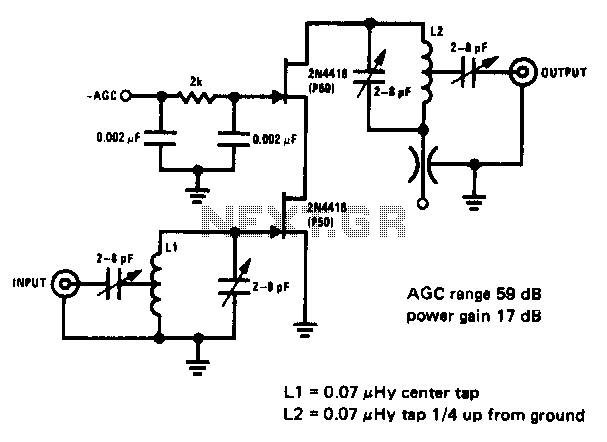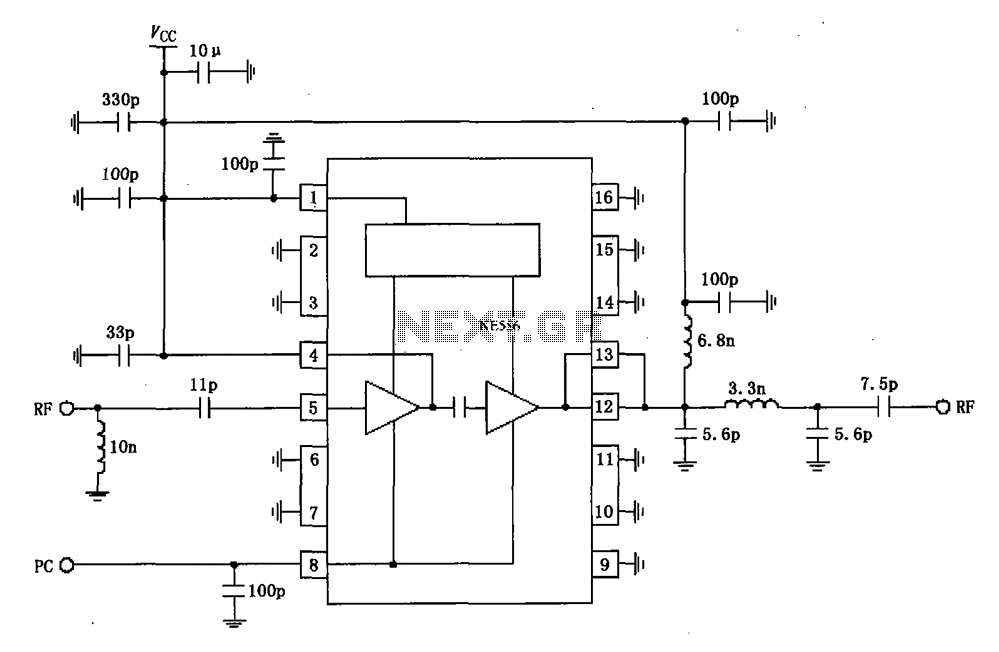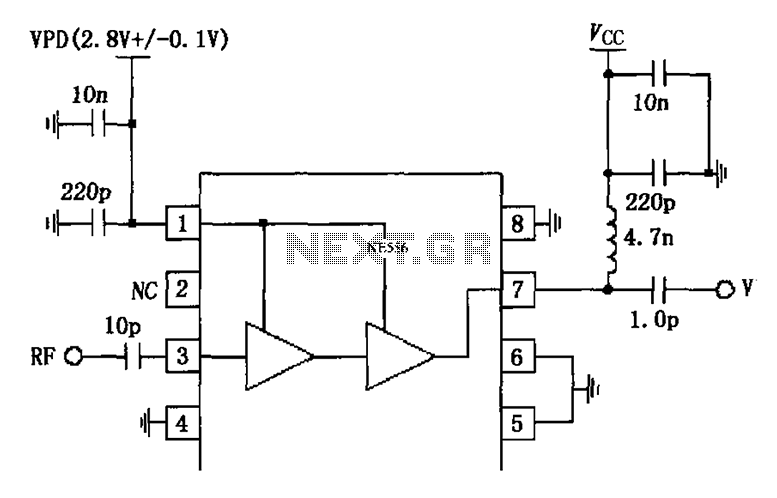
10 MHz VFO
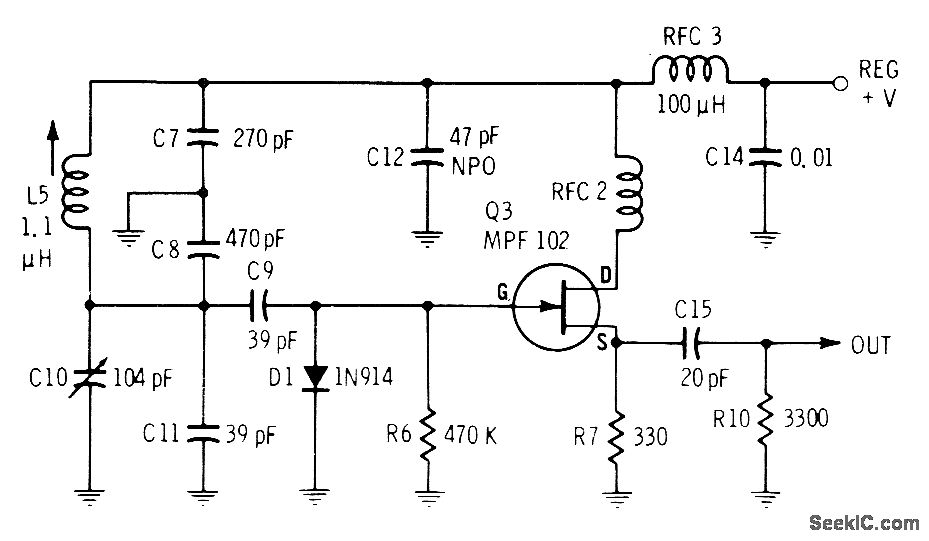
The values provided for a high-stability variable-frequency oscillator indicate its operation within the 10-MHz range. A stable supply voltage is critical for optimal performance. It is recommended to utilize silver mica capacitors in the gate circuit to ensure maximum stability.
A high-stability variable-frequency oscillator (VFO) designed for operation in the 10-MHz range requires careful consideration of its components and power supply. The oscillator's performance is heavily influenced by the stability of the voltage supplied; fluctuations can lead to frequency drift, which is detrimental in applications requiring precise frequency control.
To achieve the desired stability, it is advisable to implement a voltage regulator that can maintain a constant output despite variations in input voltage or load conditions. This ensures that the oscillator operates within its specified parameters, providing reliable frequency output.
In the gate circuit of the oscillator, the choice of capacitors plays a significant role in determining the overall stability of the circuit. Silver mica capacitors are recommended due to their low dielectric loss, high stability, and excellent temperature characteristics. These capacitors are less prone to aging and have a minimal change in capacitance over time, making them ideal for high-frequency applications.
The oscillator circuit may utilize a field-effect transistor (FET) for its active component, as FETs are known for their high input impedance and low noise characteristics, which contribute to the overall performance of the oscillator. Proper biasing of the FET is essential to ensure linear operation and to avoid distortion of the output signal.
In summary, the design of a high-stability variable-frequency oscillator operating in the 10-MHz range requires a stable power supply and carefully selected components, particularly silver mica capacitors in the gate circuit, to achieve optimal performance and reliability.Values shown for high-stability variable-frequency oscillator give operation in 10-MHz range. Stable supply voltage is essential. Use silver mica capacitors in gate circuit for maximum stability. -E. M. Noll, FET Principles Experiments, and Projects, " Howard W. Sams, Indianapolis, IN, 2nd Ed. , 1975, p 193-194. 🔗 External reference
A high-stability variable-frequency oscillator (VFO) designed for operation in the 10-MHz range requires careful consideration of its components and power supply. The oscillator's performance is heavily influenced by the stability of the voltage supplied; fluctuations can lead to frequency drift, which is detrimental in applications requiring precise frequency control.
To achieve the desired stability, it is advisable to implement a voltage regulator that can maintain a constant output despite variations in input voltage or load conditions. This ensures that the oscillator operates within its specified parameters, providing reliable frequency output.
In the gate circuit of the oscillator, the choice of capacitors plays a significant role in determining the overall stability of the circuit. Silver mica capacitors are recommended due to their low dielectric loss, high stability, and excellent temperature characteristics. These capacitors are less prone to aging and have a minimal change in capacitance over time, making them ideal for high-frequency applications.
The oscillator circuit may utilize a field-effect transistor (FET) for its active component, as FETs are known for their high input impedance and low noise characteristics, which contribute to the overall performance of the oscillator. Proper biasing of the FET is essential to ensure linear operation and to avoid distortion of the output signal.
In summary, the design of a high-stability variable-frequency oscillator operating in the 10-MHz range requires a stable power supply and carefully selected components, particularly silver mica capacitors in the gate circuit, to achieve optimal performance and reliability.Values shown for high-stability variable-frequency oscillator give operation in 10-MHz range. Stable supply voltage is essential. Use silver mica capacitors in gate circuit for maximum stability. -E. M. Noll, FET Principles Experiments, and Projects, " Howard W. Sams, Indianapolis, IN, 2nd Ed. , 1975, p 193-194. 🔗 External reference
